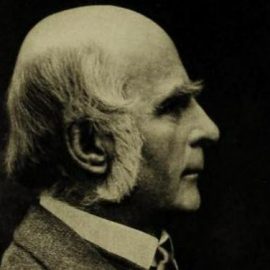

This article is an excerpt from the Shortform book guide to "The Autobiography of Malcolm X" by Malcolm X and Alex Haley. Shortform has the world's best summaries and analyses of books you should be reading.
Like this article? Sign up for a free trial here.
Why was Malcolm X drawn to Boston? What did he learn about society there? How did he end up in prison?
In Malcolm X’s autobiography, he details his early life and why he chose to move to Boston when he was a teenager. While there, he got a firsthand view of both sides of the coin of Black culture—and one side in particular drew him in.
Keep reading to learn about Malcolm X in Boston.
Malcolm X in Boston
Malcolm X had an older half-sister named Ella. She was his father’s daughter from a previous marriage. Malcolm X stayed one summer with her in Roxbury (a neighborhood of Boston). This stay had a huge impact on him because Roxbury was a thriving Black cultural center. Malcolm X, in Boston, got his first exposure to a picture of Black success.
After an incident at school left him feeling defeated, he asked Ella if he could live with her. She agreed, and he moved there after eighth grade.
(Shortform note: Experts note that, for most of its nearly 400-year history, Roxbury was primarily inhabited by white people—but, it was well on its way to becoming primarily Black by the time Malcolm X lived there because of the Second Great Migration. This was an exodus of Black Americans seeking reprieve from the Jim Crow South. The Roxbury home where Ella and Malcolm X lived was recently added to the National Register of Historic Places, and Ella’s descendants, who own the house, plan to offer tours of the upstairs area Malcolm X occupied.)
Ella encouraged Malcolm X to get to know the nice parts and people of Roxbury, but he was drawn to the ghetto. (Shortform note: Historians explain that Black ghettos like the one Malcolm X was drawn to were created by way of housing discrimination: a combination of racist zoning laws, home insurance practices, and strategic placement of low-income housing projects that effectively segregated Black people in areas with fewer resources.)
In the ghetto, he befriended a man named Shorty, who helped him get a job as a shoeshiner at a nearby ballroom. Eventually, he moved in with Shorty—partially because Malcolm X started dating a white girl named Sophia, which Ella didn’t like. He explains that hanging out with Shorty and his friends changed him in a few ways: He started to gamble, drink, and smoke cigarettes and marijuana. He also learned how to dress and talk as they did in the city.
(Shortform note: Shorty, whose real name was Malcolm Jarvis, published his own autobiography in 2001 to correct misrepresentations of his character in retellings of Malcolm X’s life story. Malcolm X would remain an important figure in Shorty’s life—he even kept a scrapbook documenting Malcolm X’s accomplishments.)
Malcolm X had a few different jobs and eventually landed a gig as a cook on a train. At first, he excelled at this job because, he explains, he acted like an “Uncle Tom”—a Black person extremely devoted to serving white people. The train sometimes took him to Harlem, and, the more time he spent there, the more he loved it. At 17, in 1943, he moved to Harlem to work at a nightclub called Small’s Paradise.
Some of his customers were involved in the underground crime scene. Malcolm X explains that the criminals he knew became criminals because white society deprived them of the opportunity to fulfill their true potential—they turned to crime in order to survive, and they did drugs to help them deal with the pressure. Malcolm X, too, started committing crimes and doing drugs to get from day to day.
After an altercation with another hustler almost ended in violence and led him to go on a multi-drug-fueled bender, Shorty took him back to Boston.
After returning to Boston in 1945, Malcolm X decided to start a burglary ring involving Shorty, their friend Rudy, Malcolm X’s girlfriend Sophia, and her sister. Since the women were white, they could get into houses by pretending to have legitimate business there (selling encyclopedias, for example), which Black men couldn’t do without arousing suspicion. When they left, they could tell the men how the house was set up and where there were any items worth stealing. Their burglary scheme was successful, but Malcolm X explains that he continued doing a lot of drugs to help him deal with his anxiety about being caught.
(Shortform note: Burglary is often confused with similar crimes, like larceny (also known as theft) and robbery. Burglary refers to the act of illegally entering a building to perpetrate a crime. In contrast, larceny or theft is the act of taking someone else’s property, and robbery is a form of theft that’s accomplished by means of violence. According to the US Department of Justice, most people who are convicted of burglary—as Malcolm X was—are motivated to burgle because they need to fund their continued drug use. This is another vicious cycle: Committing a crime has been shown to increase anxiety and depression in boys, and stress has been shown to fuel drug use—a habit that may require further criminal exploits.)
Eventually, they were caught—and, in 1946, Malcolm X was sentenced to eight to 10 years in prison at the age of 20.

———End of Preview———
Like what you just read? Read the rest of the world's best book summary and analysis of Malcolm X and Alex Haley's "The Autobiography of Malcolm X" at Shortform.
Here's what you'll find in our full The Autobiography of Malcolm X summary:
- Malcolm X explains why he believed what he believed
- The historical and sociological context surrounding Malcolm X’s life
- Why Malcolm X was such a controversial figure






